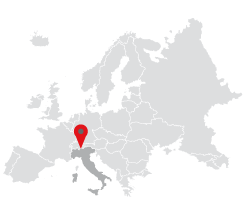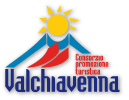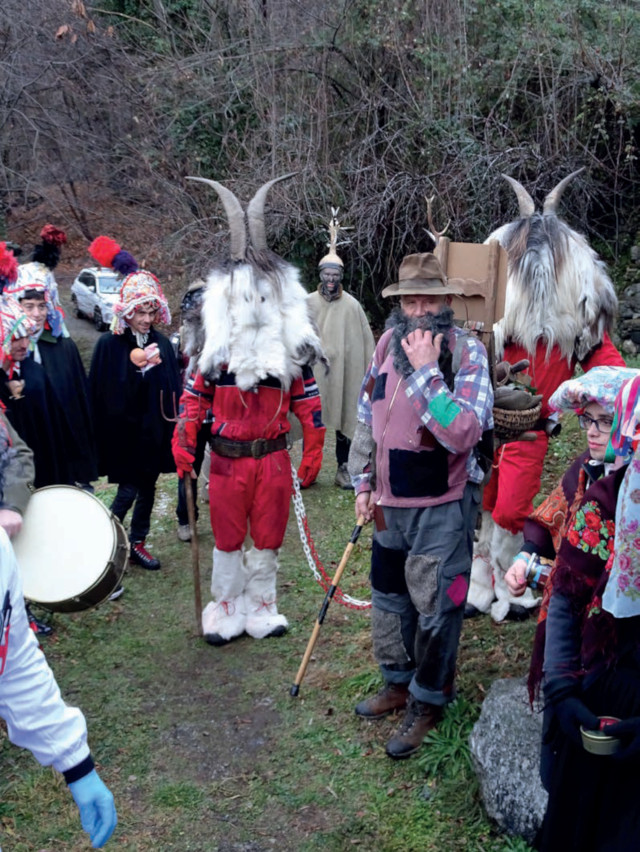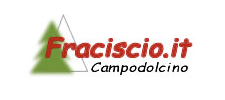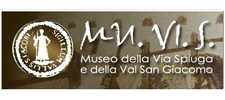The folklore of Valtellina and Valchiavenna
The folklore of Valtellina and Valchiavenna intertwines the sacred and the profane, past and present, with traditions that take you through the entire year. The peripheral areas, such as around Bormio and the villages on hillsides, have preserved many customs thanks to their isolation, whilst modernity has led to the oblivion of plenty other traditions.
Bondì Ghibinet and Gabinàt. On January 6, in Livigno, children take to the streets greeting passers-by with “Bondì Ghibinet”, and receiving sweets and small gifts in return. Anyone who does not respond to the greeting must “pay the price” with a present. Not unsimilar is the Gabinàt of Bormio, where the custom, linked to the gifts of the Three Magi, also harks back to the pagan traditions of the Roman Saturnalia. Gift-giving rituals which represent a moment of community spirit and joy that unites past and present.
Bagùta. At Menarola, in Valchiavenna, la Bagùta, lives on. It’s an ancient folk tradition that represents a combination of religious and theatrical elements. The itinerant procession features characters such as the Devils, the Thief, the Priest and the Brides. Rich in symbolism the spectacle evokes ancient rites of passage and recalls the fixed-character theatre of the eighteenth century. La Bagùta, with its mixture of the sacred and the profane, celebrates community life through masks and ritual jokes.
L&´Homo Salvadego. The Wild Man, a mythical Alpine figure, is a symbol of primordial justice and a bond with nature. Usually depicted in paintings such as the “camera picta” in Sacco, he is portrayed as a hairy and strong being who punishes those who offend him. The figure, associated with both pre-Christian legends and indeed milk processing, embodies the connection between peasant culture and myth. Similar symbolic characters are found in other Alpine areas, such as Val Codera, where it is called Valföbbia.
Cupéta. January 17, on the feast of Sant’Antonio Abate, the Valtellina tradition of organisations in communities, such as Morbegno and Sondrio continues; the production of Cupéta, a dessert made of honey, sugar and chopped walnuts. The very same dessert would be prepared in Sondalo on the feast of Sant’Agnese and in Bormio for that of Santa Lucia.
L’è fòra Genéjron e l’Ors de la tana. On January 31, in Bormio, children announce the end
of the month with the cry “L’è fòra Genéjron”, accompanied by the sound of cans being dragged through the streets. On February 2, in a parallel ritual to Candelora, they celebrate “L’è fòra l’Ors de la tana”, symbol of the bear waking up from hibernation. These traditions celebrate the passage towards spring and the return of light.
Carnevàl di Mat. In February, Bormio hosts the Carnevàl di Mat, a tradition that overturns the rule of law for a day. The Harlequins of the Compagnia di Mat elect a Podestà di Mat who symbolically replaces the mayor, affording space for both gossip and complaints collected from the population. This carnival combines irony and freedom of expression, continuing an ancient celebration of social revolution.
Fora l’erba che l’è marz! On March 1st, in Valchiavenna, they celebrate “Fora l’erba che l’è marz!”. Children and adults meander through the fields ringing cowbells to symbolically awaken the earth from winter sterility. This ritual, which preserves its pagan roots, represents the direct link between man and nature and the hope for a new season of fertility
Processione del Venerdì Santo. During Holy Week, evocative processions enliven the entire province of Sondrio. In Morbegno, the Good Friday procession features an 18-metre baroque wooden catafalque, made in 1737 and attributed to Pietro Ligari. In Chiavenna, the procession takes place at night, with brotherhoods in traditional dress, standards and statues depicting the Passion of Christ. These deeply symbolic events unite faith, art and tradition, keeping alive the link with the baroque past.
I Pasquali di Bormio. At Easter, Bormio celebrates the Pasquali, when artistic sedan chairs decorated with religious themes and carried in procession by the town&´s “Departments” or indeed districts. It’s a tradition which dates back to the 17th century, represents moments of community and competition, with a jury that awards the most attractive works. The parade, embellished with fantastic traditional costumes, culminates in the piazza del Kuerc, where recollections of the rural and religious roots of the territory mixes happily with creativity and local craftsmanship.
